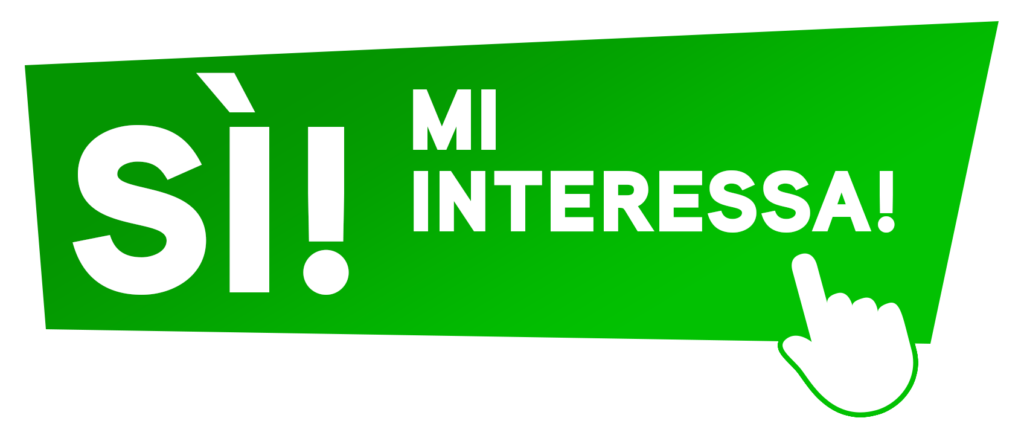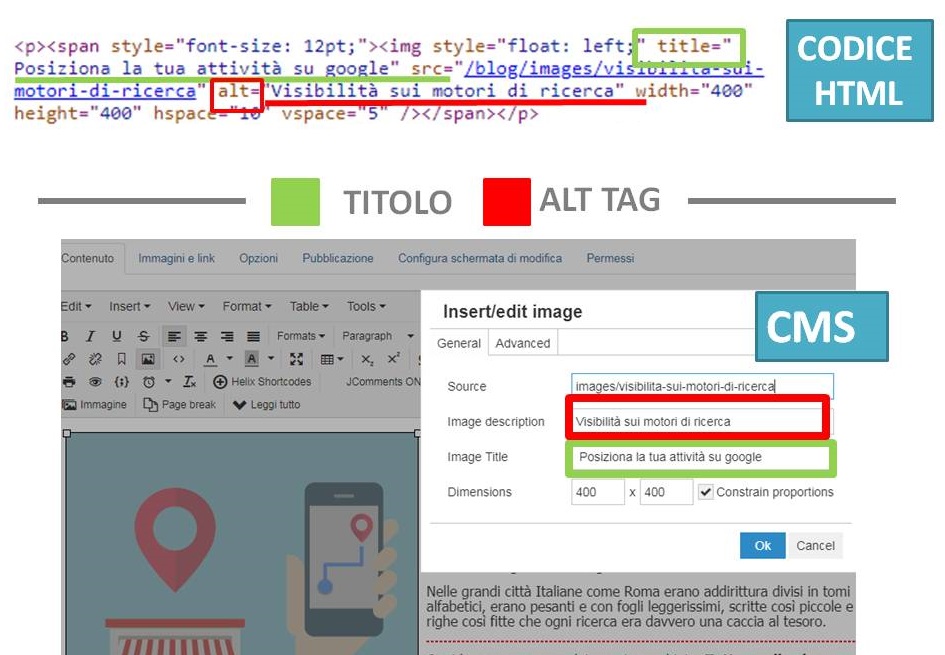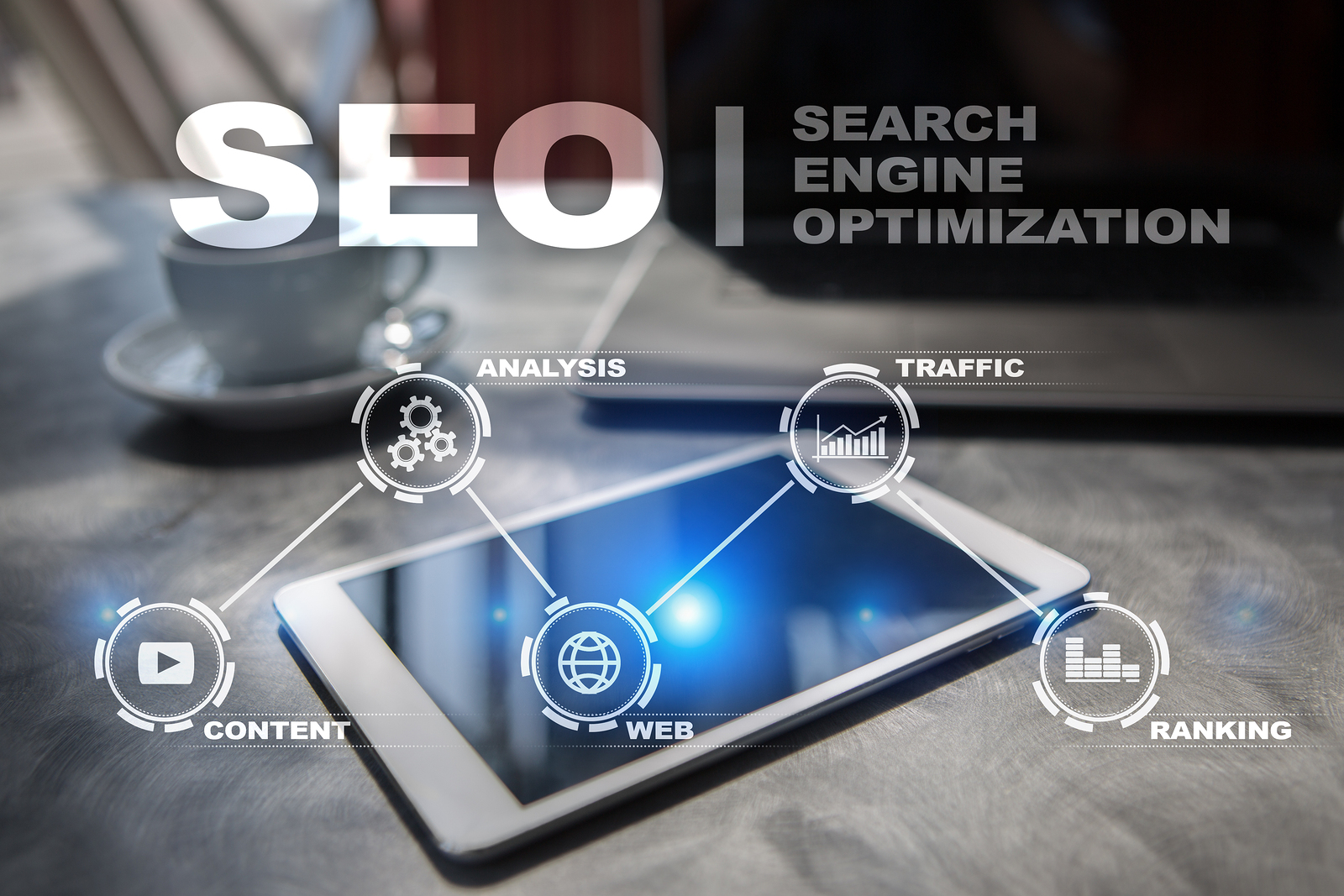Optimizing a website for search engines means making it a marketing tool capable of attracting potential target customers.
A website, in fact, should be thought of and intended as a business tool and not as a mere complement, or worse ornament, to one’s business communication.
If you are wondering if the website has lost centrality or is outdated to the benefit of social networks, as I hear some people say, know that the answer is NO.
Certainly there are some sectors and types of business in which the website is not the priority. Some businesses, in fact, because of the particularity of the sales process or the way products or services are offered, would probably benefit more from using other marketing tools, perhaps even offline.
But for all industries in which the online marketplace represents an opportunity, the website is still the heart of the web marketing strategy, and without fear I would say that it will remain so for a long time to come.
In all likelihood, if you have ended up on this page, you are looking for a solution to turn your site into a sales and contact acquisition channel…
Well, then you should know that to do all this a site absolutely needs to be SEO optimized.
As you most likely know, SEO stands for Search Engine Optimization or Search Engine Optimization, but taking into account the fact that Google makes it as a monopolist, with peaks touching more than 93% of the world market, talking about SEO today is equivalent to talking about Google optimization.
Search engine optimization is represented by all those actions and, pardon the repetition, optimizations that you need to make both on site, and in this case we are talking about seo on site, and off site seo off site, in order to improve the organic ranking of the same on search engines for the keywords or keywords of interest. Mind you, when we talk about SEO, we are talking about organic positioning with respect to certain keywords or keywords. A positioning that builds over time and allows a website, albeit with fluctuations, to secure some stability in the SERP, grow its authority and improve visibility.
We speak, on the contrary, of paid positioning or SEM when this is the result of Keyword advertising campaigns on Google AdWords. In the latter case, you will have positioning only and exclusively for the duration of your campaign. Once the campaign is discontinued, your website will return to its original position.
Before we get into any disquisition about the actions necessary for search engine optimization, I recommend you watch this video in which I briefly explain how google works and what is the fundamental difference between indexing, optimizing and ranking a website.
SEO AND WEB MARKETING TWO SIDES OF THE SAME COIN
You should know that devoting yourself to search engine optimization, hence doing SEO, means engaging in online marketing activities and actions. Yes, marketing, that’s right! Jot down somewhere the phrase “Doing SEO is marketing” and don’t forget it.
Those who do SEO aim to rank high on Google and bring traffic to the same by trying to attract target customers.
I’ll try to explain better what I mean. All optimization actions performed on a website, whether on site or off site, affect the ranking of your site on search results with the effect of:
1.increase visibility on Google
2.facilitate the meeting of DEMAND and OFFER.
A well-optimized site in fact:
ranks better on Google
attracts more traffic
encourages contact with target users
succeeds in acquiring customers
But what does SEO have to do with marketing?
First, a quick review of the definition of what it means to do marketing.
Most entrepreneurs and professionals confuse marketing with advertising, or worse, believe that marketing is the purview only of large companies. Nothing could be more wrong. Anyone who wants to sell a good or service cannot do without a market analysis, capable of showing how to match supply and demand.
From a Web perspective, your target market is the online market. On the web, demand is represented by a query (=keyword) that the user types into the Google search bar. See for example the image below, where the DEMAND is represented by the word “pellet stove.”

While the OFFER is represented by the ordered list of results that Google returns to us with respect to our query.

With this simple example I just want you to understand what I mean by matching supply and demand from an SEO perspective. If I am a user looking for a pellet stove, through an internet search I can find an infinity of offers capable of more or less precisely satisfying my demand. The image above shows how the SERP (= google results page) returns both images depicting a pellet stove and a list of websites on the same object.
SEO ON SITE AND OFF SITE
As I mentioned above, when we talk about search engine optimization it is useful to make a distinction between actions taken on site, called on site optimizations, and actions taken off site called off site optimizations.
In this analysis we will focus on the on site factors directed at SEO optimization. As you read, I invite you to take pen and paper and mark “point by point” whether your website complies with these steps.

SEARCH ENGINE OPTIMIZATION: MAIN ONSITE FACTORS
1:: Make a website with a good structure. If you want to start with the basics, know that “the foundation of any website is given by its structure.” Therefore, it is important to plan the organization of content following a hierarchical and prioritized order. Information should be structured according to a criterion that goes from “general to particular,” so as to guide the visitor within gradually more specific content.

Each page of your website should be linked to another and should allow the user to return to the home page easily and in a few steps. It is very important to create internal links or cross links, which cross-link related content within the website. Having internal links, which refer from one page to another on the website, has the dual function of:
offering the search engine links to related content, making the thematic focus of the site to be indexed clearer
bring traffic to pages that are not yet well positioned, because they may be newly built or more hidden
point the visitor to the informational path to further explore the content they are viewing
stimulate the user to stay on the website so as to increase their dwell time and reduce the bounce rate. Bounce rate indicates the percentage of visitors who, once they have accessed the website, visit only the page they landed on and then leave… “bouncing”! A high percentage of the bounce rate is definitely a factor to be interpreted: it can be entirely physiological and natural or be a signal to be analyzed.
2:: Have a mobile friendly website. The data speaks for itself, the number of people accessing the web from a smartphone or other mobile device is growing daily. This trend has not left Google indifferent. “Big G” has released Mobile First Index, an update to its algorithm through which it preliminarily verifies whether “a website is optimized for viewing from mobile,” all obviously with consequences in terms of ranking. Let me explain better, if you have a site with only the desktop version Google will continue to index it, but will prefer a competitor of yours that has a so-called responsive site that is adaptable, in its display, to any device.

Give it a try right away, check your site’s visibility from mobile devices through Google Test Mobile a free tool provided by Google.

In addition, having a website optimized for mobile devices has obvious “user experience” side benefits. A site that is easily navigable from smartphones increases the visitor’s time on the site, positively affecting its ranking.
3:: Have a fast website. The speed at which your website’s pages load is another important factor capable of improving its ranking. In fact, the time people “give” to opening a web page is getting shorter and shorter. If you want to check the speed of your website you can do so through this free tool: Google Page Speed Insights. In case the results are not good, I suggest you take action by following the directions Google itself will give you. Remember that time is a very valuable resource, the Internet has made us all less patient and even a fraction of a second can make the difference between you and your competitor.
4:: Have talking URLs that are not too long. The URL, short for Uniform Resource Locator, is the address that uniquely identifies a web page. Every resource on the Internet has a unique URL: in fact, there cannot be 2 pages with the same URL or address.

In the image above, I wanted to exemplify what is meant by a speaking or seo friendly URL. The URL address is one of the textual elements that appear on the Google results page whenever a search is made. The image below is Google’s 1st Page for the word “country house renovation” and, as you can see, in all the URLs I have highlighted there are relevant, if not identical words with the search just done.

5:: Optimize the Title Tags of each page. If I had to explain it in the simplest way I know, I would tell you that the Title Tag is the Title of a web page. This Html Tag is still one of the basic elements for on-page website optimization. It basically has 2 functions:
user side: it helps us to choose among the various results proposed by Google. In the image below I have placed in a green box the Title Tag, as you see it is the first element capable of capturing the reader’s attention, helping him to understand the content of the proposed resource. Obviously, the user will have arrived on the google page based on his specific question and, consequently, will click on the title that will best represent for him the answer he was looking for.
Therefore, in writing the Title of your website pages, follow these invaluable tips:
1:: Include in the title tag the Keyword for which you are trying to rank on Google. And since the title tag is about 55 to 60 characters long, try to keep the keyword as far to the left as possible.
2:: Write it in such a way that it succeeds in attracting the reader’s attention > search engine side: it helps Google’s spiders understand at a glance the content of a given web page. In short, the title is for Google a clear indicator of the content that will be talked about.

6:: Optimize titration tags H1- H2 – H3… H6. If you want to rank well on Google, you definitely need to produce quality content, but it is not enough. If you have decided to work on search engine optimization for your site, you will have to take care of the structure of the text by paying attention to the Headings or Titling Tags. These are important elements when writing and layout content, especially when writing articles that exceed a certain length.
Headings Tags have a dual function:
- they serve the search engine to understand what the logical structure of the entire “writing” is, highlighting priorities and hierarchies
- they help the user in reading the texts
Since the function of these Tags is to “open paragraphs” they are useful and recommended whenever you want to organize a fairly structured textual content. They have an ascending order of importance: the H1 is the Title of our content/article and indicates the topic we are talking about. It is a good idea to include a keyword in this tag. P.s. be careful not to confuse it with the Title Tag which is, on the contrary, the title of the web page. If your article is long you will surely need to break it down into several paragraphs, for this the H2 will help, and in case of more complex structure, the other Tags H3 – H 4… And so on.
If you are wondering “How do I insert these Tags? I don’t know anything about html code,” know that it’s really simple. In fact, most popular CMSs contain this option within the text editor, as I show you in the following image.

In the text layout phase, it will therefore be very easy for you to go and enhance all the elements useful for the proper organization of your content. In the image posted below I show you, HTML code side, how the various Heading Tags are read by the search engine. To make it easier for you to understand I have written in red the H1 Tag and in green the H2 Tag.

7:: Optimizing images. Image optimization is as important as it is neglected. Every image on the web in fact has at least 3 references that should be emphasized as they are very important for search engine optimization. Let’s talk about the file name, the image title and the Alt Tag.
Image Name: when we take a picture with a smartphone or camera the file name is represented by a sequential number e.g. IMG_853.jpg or DSC_453.JPG. Do these acronyms give you a hint? Definitely not. That is why it is recommended to rename the file with a name that describes the image.

In the following image, I show you how the Title (framed in green) and ALT TAG (framed in red) appear from the HTML code side of the page and within the Joomla CMS editor.







